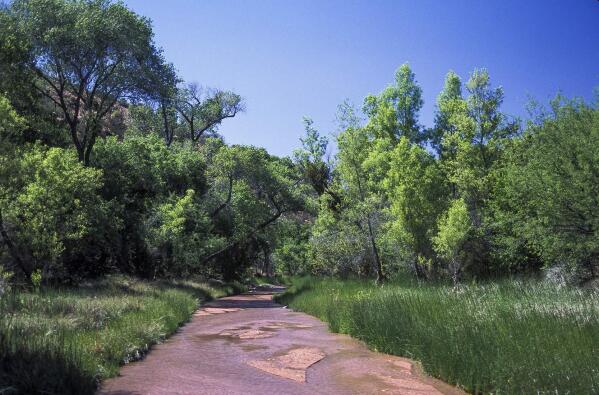Feds agree to keep cattle out of northern Arizona rivers
PHOENIX (AP) — Federal land-management agencies have agreed to do more to keep cattle from grazing in sensitive habitat for threatened and endangered species in the Verde River watershed, settling a lawsuit filed by environmental groups.
The U.S. Fish and Wildlife Service and the Forest Service agreed to regularly inspect riparian areas near grazing land and promptly take steps to return any cattle to their owner and fix broken fencing. The settlement was approved on Wednesday by a federal judge in Phoenix.
“Their cows get fat by destroying our rivers. These ranchers make money by disobeying or by not following the rules and the law,” said Robin Silver, cofounder of the Center for Biological Diversity, which filed the lawsuit along with the Maricopa Audubon Society. “Now this requires the ranchers actually to comply. And it requires the Forest Service to actually do their jobs.”
The settlement is the third this year involving cattle grazing in Arizona where federal officials agreed to enforce longstanding protections for endangered species and their habitat. Cattle have for years been banned from streambeds and other sensitive areas but little has been done to enforce that law.
Environmental groups have for decades been at odds with the federal government over what they consider lax enforcement of grazing boundaries. They say cattle grazing near rivers and streams trample wetlands and destroy habitat that allow rare plants and animals to thrive. Those include southwestern willow flycatchers, yellow-billed cuckoos, Gila chub, loach minnow and spikedace fish, Chiricahua leopard frogs, and narrow-headed and northern Mexican garter snakes.
The Verde River agreement affects 140 miles (225 kilometers) of streams and 22 ranching allotments in Northern Arizona. Two similar settlements this year affect the White Mountains in Eastern Arizona and the Gila River watershed spanning the Arizona-New Mexico state line.
Cattlemen say the federal government is already overextended managing the forests and other lands they control.
“At the end of the day, the US Forest Service doesn’t have a good track record,” said Patrick Bray, executive vice president at the Arizona Farm and Ranch Group, which represents many cattle ranchers. “It’s going to take maintaining fence, it’s going to take working with permittees and others to make sure that you meet it.”
Bray and others say the federal government is being hamstrung by environmental groups like the Center for Biological Diversity, and that many of the cows that are causing damage are unbranded, wild cattle that no one owns.
“The Center for Biological Diversity, they’re a radical left wing group. And they do what they can to get rid of cows,” said Steve Pierce, a former state lawmaker who owns a ranch north of Prescott. “But the other side of it, the cows aren’t destroying nearly as much of the habitat as the forest fires.”
Pierce said if the federal government allowed enough cattle grazing and other uses, there would be fewer fires and better habitat for endangered species.
Republican Rep. David Cook, a rancher from Globe, said it was wild cattle doing most of the damage. He described a merry-go-round where the federal government agrees to keep cattle out of sensitive areas to settle a lawsuit but no cattlemen are allowed to argue their side of the debate in court and little is done. Then years later another lawsuit ends in a settlement.
“So now they’re wrong again, right?” he said of the Forest Service.
Bray agreed.
“Maybe the (Center for Biological Diversity) feels that they got what they needed or wanted” he said. “At the end of the day, I don’t hold much faith that the U.S. Forest Service is going to follow through and 10 years from now we’ll be in the same boat.”


